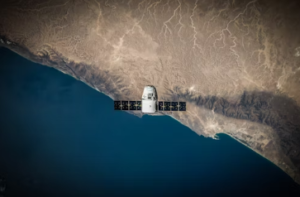Few things fire the human imagination as does the vastness of space. It is a realm of infinite mystery, endless possibility, and questions that beg us to dream beyond our earthly confines. Yet, for most of us, space remains abstract: a distant, untouchable void glimpsed only through telescopes and textbooks.
That is where movie magic steps in—to reimagine our relationship with the cosmos. Films have the power to make space accessible, relatable, and utterly fascinating through compelling storytelling, jaw-dropping visuals, and emotionally resonant narratives.
The Power of Storytelling in Space Cinema


At its core, cinema is about storytelling. It weaves tales that reflect our deepest fears, aspirations, and curiosities. Space-themed movies tap into the universal human desire to explore the unknown. Whether it’s the gripping tale of survival in The Martian or the profound exploration of time and love in Interstellar, these films craft narratives that resonate on a deeply emotional level.
Consider Gravity, the visually stunning Alfonso Cuarón film about two astronauts stranded in orbit. Besides the visuals, the movie captures the fragility of human existence and the indomitable will to survive. Similarly, Interstellar stands out not only for its spectacular depiction of space but also for its deeply emotional core.
The film follows Cooper, a former pilot, as he travels through a wormhole in search of a habitable planet for humanity. At its core, however, Interstellar is about love, sacrifice, and the bond between a father and his daughter—things that know no borders. It is on this emotional level that space movies become so powerful, building drama on the cold, impersonal void of space into such a deeply human matter.
Making the Cosmos Relatable
Probably the greatest challenge of portraying space is its sheer vastness—how to make light-years, black holes, and other phenomena relatable to someone with no background in astrophysics. Movies bridge this gap by placing cosmic phenomena within humanly relatable experiences.
Take Interstellar, for example. Christopher Nolan’s epic isn’t merely about wormholes and quantum mechanics; it’s a story of a father’s love for his daughter. By anchoring its narrative in something universally relatable, the film simplifies complex scientific concepts. Suddenly, audiences aren’t just watching a movie about space—they’re emotionally invested in its stakes.
Visual Spectacle: Bringing Space to Life


Space is inherently cinematic: vast, beautiful, mysterious, and tailor-made for the big screen. Films such as 2001: A Space Odyssey and Interstellar have pushed the boundaries of visual effects, bringing the cosmos to life in ways that books and documentaries simply cannot. These visuals do more than entertain; they inspire awe.
In 1968, Stanley Kubrick’s 2001: A Space Odyssey set the gold standard for depicting space travel. Its iconic visuals—the rotating space station, the enigmatic monolith—changed how space was portrayed on film. Modern classics such as Gravity, Interstellar, and The Martian have continued this tradition, utilizing advanced CGI and meticulous detail to create immersive experiences. For instance, the depiction of a black hole in Interstellar, developed with input from physicist Kip Thorne, was so precise it later contributed to scientific research.
Inspiring the Next Generation
Space-themed films possess a rare ability to inspire. For many scientists, engineers, and astronauts, the spark of interest in space originated not in a classroom but in a movie theater. Even famed astrophysicist Neil deGrasse Tyson often speaks of how films like Star Wars and 2001: A Space Odyssey influenced his career.
These films not only entertain but sow the seeds of curiosity. A child who watches The Martian may dream of becoming a botanist on Mars, while a teenager mesmerized by Interstellar may explore physics to understand wormholes. By showcasing the wonders of space, movies encourage interest in STEM fields and humanity’s exploration of the cosmos.
Bridging Science and Imagination
Space cinema strikes a remarkable balance between scientific accuracy and imaginative storytelling. Films like The Martian collaborate closely with scientists to portray realistic space travel and survival scenarios. Meanwhile, works like Star Wars prioritize imagination, creating fantastical worlds that celebrate the spirit of exploration.
Both approaches have their value. The grounded realism of The Martian and Gravity makes space exploration feel achievable, while the fantastical elements of Star Wars and Guardians of the Galaxy remind us of the boundless potential of human creativity. Interstellar masterfully bridges these worlds, grounding its story in real science while speculating on concepts like time dilation and fifth-dimensional beings.
Addressing Existential Questions


Space movies often tackle humanity’s most profound questions: Are we alone? What is our place in the universe? What does it mean to be human? These inquiries lend space films a philosophical depth that elevates them beyond mere entertainment.
For instance, Contact, adapted from Carl Sagan’s novel, explores the search for extraterrestrial intelligence while examining themes of faith, science, and human connection. Similarly, Interstellar delves into time, love, and sacrifice. These films challenge audiences to reflect on their existence and spark discussions that extend far beyond the theater.
Building a Sense of Unity
The vastness of space offers a unique perspective, highlighting humanity’s shared fragility. Space films often echo this theme, emphasizing unity and cooperation.
In Apollo 13, the world rallies to save three stranded astronauts. In The Martian, an international team works tirelessly to rescue a single stranded astronaut. Similarly, Interstellar portrays humanity’s collective effort to secure survival. These stories underscore what humanity can achieve when we set aside differences and work toward common goals.
The Future of Space Cinema


As technology evolves, so does the potential of space cinema. Innovations like virtual reality, augmented reality, and advanced CGI promise even more immersive experiences. Imagine stepping into a VR simulation to explore Mars or journey through a black hole. Such advancements could redefine how audiences experience space.
Moreover, with real-world space exploration progressing—missions to Mars, James Webb Space Telescope discoveries, and private ventures like SpaceX—the inspiration for filmmakers continues to grow. The lines between science fiction and science fact are increasingly blurred, opening new possibilities for storytelling.
Conclusion: The Cosmic Impact of Cinema
Movies possess the unique ability to make the unreachable seem within grasp. Through captivating narratives, breathtaking visuals, and thought-provoking themes, they transform the abstract vastness of space into something tangible and personal. They inspire us to dream, explore, and question our place in the universe.
Whether it’s the realism of The Martian, the spectacle of Interstellar, or the fantasy of Star Wars, space films remind us of the limitless potential of human imagination. They show us that the cosmos is not just a distant frontier but a canvas for our hopes, fears, and aspirations. In doing so, they ensure that humanity’s fascination with the stars will endure for generations to come.
